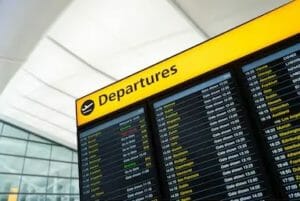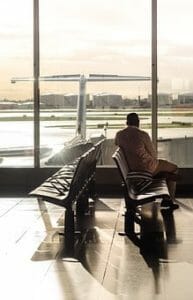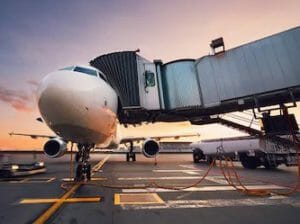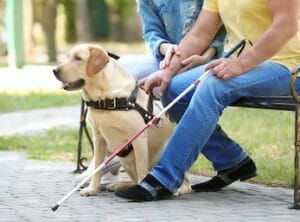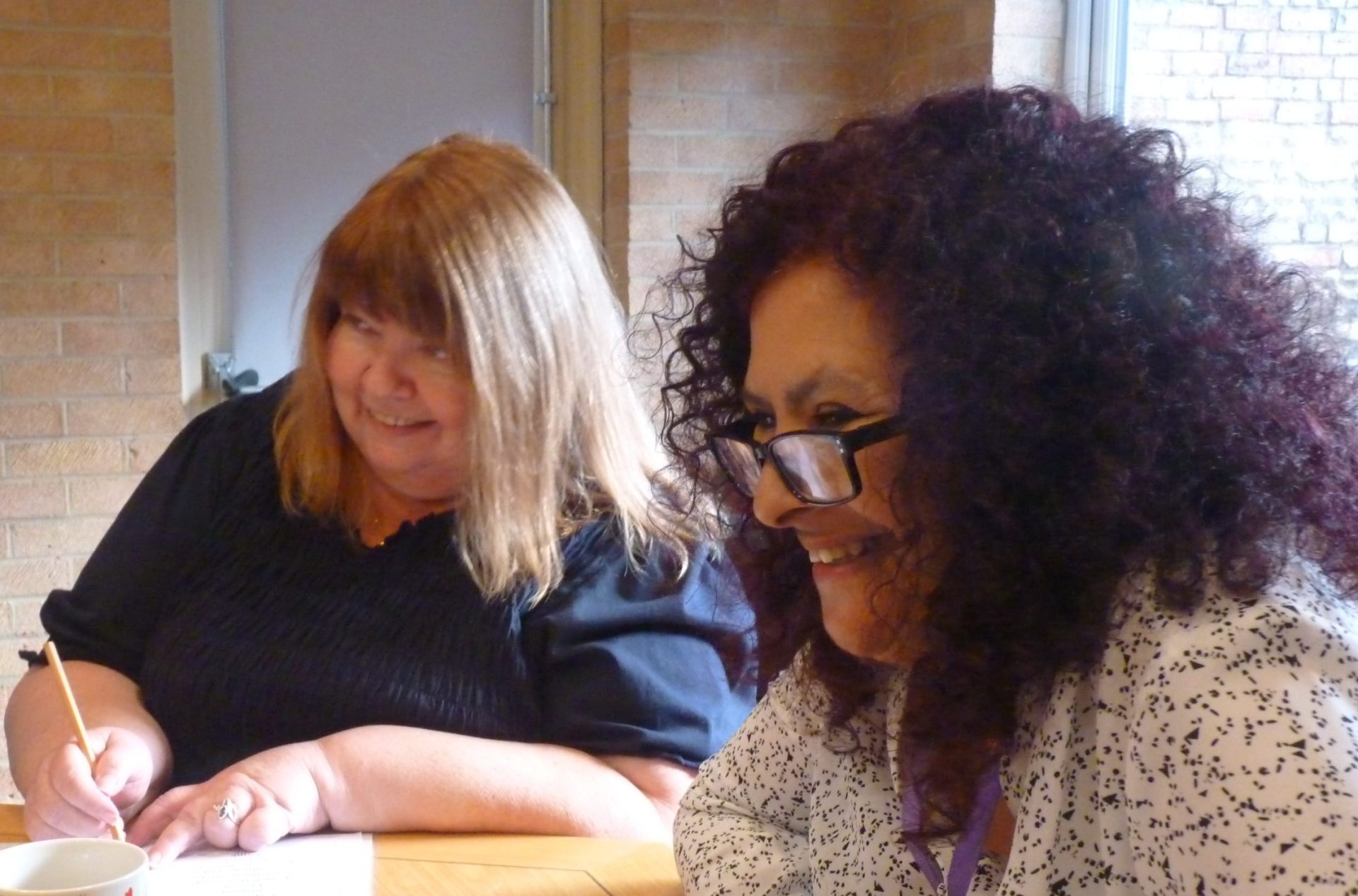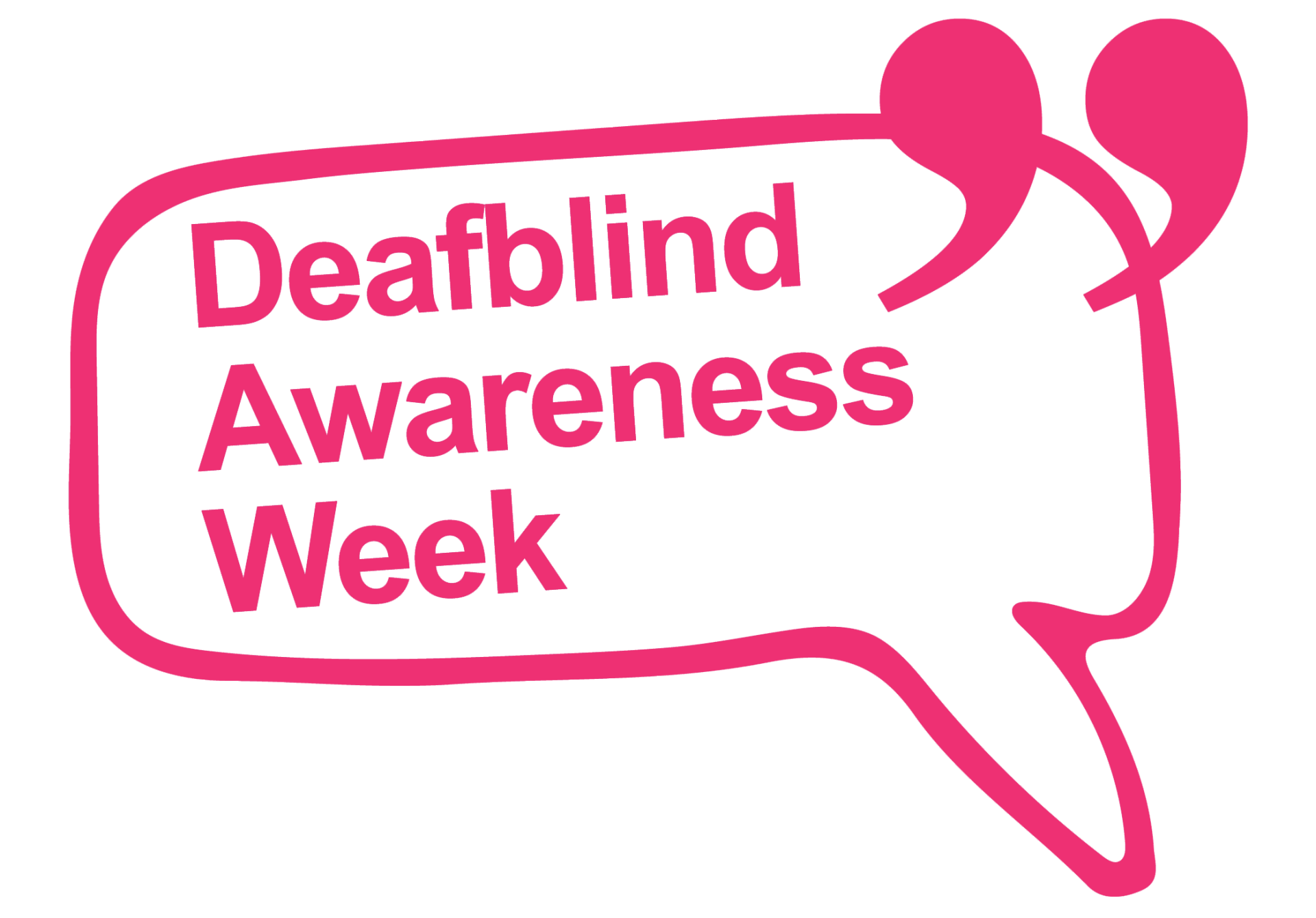Altogether Travel have put together a list of top tips and helpful hints for flying with a visual impairment or blindness. The following information is entirely their intellectual property, but we thought we’d share it here to signpost it to our readership.
Altogether Travel is the UK’s leading Supported Holiday Company, our excellent holiday and travel companions accompany our customers all over the world. We asked our customers and staff for some advice, tips and what to expect if taking a flight as a blind or visually impaired person.
Booking stage
- If you require additional assistance either within the airport or on the flight, then you should notify your travel agent or the airline direct. The more notice the better but at least 48 hrs before departure should ensure they allocate someone to help.
- Contact the airports special assistance team and advise them of your arrival time should you need assistance into the terminal.
Arriving at the airport
- Adhere to the minimum arrival time for pre-departure (2 hrs), however we would always recommend adding some leeway into this. This is due to potential issues with special assistance which has been known to happen in the past, it gives you more time to resolve issues and time to relax before transfers through airport and the flight.
- If you arrive at the airport by taxi, ask the driver if they can assist you into the main concourse to the assistance area (which is always located near main entrance). If that is not possible then the drop off area will have a special assistance call button or notification system. This will alert them that you have arrived. Ask the driver to locate this and drop you off at this point.
- If you have requested special assistance, they can meet you and assist with guiding you to check in, supporting you with any baggage check in and guiding you through security and customs.
- If you are taking a case, ensure your name, address and contact details on it, also if known keep in mind a description / colour of case. This will assist the passenger assistance at the arrival airport to locate your luggage.
- Many larger airports have electric carts – some of our customers prefer to request a transfer on this through large and busy airport (Think VIP treatment).
- You will first need to go through security, if you have assistance, they will use the fast track lane. Some airports use a coloured lanyard to provide security staff with an insight into your condition without you needing to explain. The special assistance team will provide these.
- At security will should remove any metal objects, such as watches, belts, mobile phones and empty your pockets, your items will be placed in a tray that goes through a scanner. You will be asked to walk through a body scanner or they may use a hand-held scanner on you. If you don’t beep, then you will be allowed to collect your items from you tray.
- At security during the search of your baggage you can request that security staff repack your bags, ideally the way you had it prior to search this will allow locate specific items when required.
- Once through security you are now airside, you will find shops, cafes, bars, duty free, lounges. If you have arrived in plenty of time why not ask the special assistance team to drop you off at a coffee shop, bar or restaurant if you fancy a bite to eat or drink before flight and they can come back and get you at an allocated time (remember to give them your mobile number) then take you in time for boarding.
- Otherwise the special assistance team will ‘deposit’ you at the departure gate and you’ll be left there until boarding time when someone comes and collects you to board the flight.
- Remember most airports rely on electronic boards located around airside to advise of gates, delays and boarding information for all flights. So, there is no audible announcement made (unless you are late and it’s your name called for last call for boarding, we do not recommend you rely on that!)
- Always a good idea to visit the loos within the airport prior to boarding, they are more spacious and practical than on the plane. If with special assistance, ask them to locate the nearest loo for you in the boarding area.
- If walking with special assistance, it’s important they go at your pace and support you in a way you are comfortable with. The staff tend to be very busy and will have numerous people to support, so they can be known to rush people through the airport.
- Access to the plane depends on your choice of airline, most budget airlines use stairs to access the plane, meaning you need to go outside and climb a set of steps. If the flight uses a skybridge this will bring you straight onboard the flight. If the plane uses stairs and is outside, you can request to use the ambulift which gives you stair free access to your flight. Clarify the boarding method at check in then advise the special assistance team of your preference.
On board the flight
- If you have requested assistance the member of staff will inform you when it’s time to board the plane or if any delays. You should enjoy the VIP treatment again and get to board first (even before those who have paid for priority boarding).
- Once on board the special assistance staff will hand over to the cabin crew who will now look after you on board. They will assist with stowing bags or using the overhead lockers and ensuring you are seated and comfortable.
- If you use a walking cane or white stick that cannot fold, then you will be asked to store this in an overhead locker or other storage space within the plane. If this is not possible it will be stowed in the aircraft hold and you will be offered wheelchair assistance to and from the gate, or you can ask for this be provided prior to you leaving the plane.
- Due to safety regulations you will not be allocated an exit row seat if you are blind or visually
- As you will have boarded before the remaining passengers you will be provided with an individual safety briefing such what to do in an emergency, the staff will advise you of the layout of the plane such as your tray table, the cabin call button, any in-flight entertainment, toilets and where the life jacket is located beneath the seat.
- Safety cards in Braille format are available on most flights. This safety card will be provided to you after your safety briefing. Ask the cabin crew for this safety card if it is not provided to you.
- If your flight has a meal service, you can request the Flight Attendant read the menu to you. When the food is served the cabin crew can explain where all the food is placed on your tray, if requested.
- A customer advised us that with Qantas you can ask for pre-cut meals. This should be requested at the time of booking and must be requested no later than 24 hours prior to departure.
- On board if travelling alone, it might be an idea during exchanging pleasantries when boarding to mention to the passenger next to you that you are blind or visually impaired as it may not be apparent to them, this could prevent any awkward moments or misunderstanding during the flight. They may also be of assistance should it be required.
- If you need the toilet during the flight, you can press the call button located above your head the cabin crew can assist you finding an available loo and assist you back to your seat.
- Once the flight has touched down, you will need to wait on the arrival of the special assistance to assist you in disembarking. Normally all the other passengers will be away, giving you more time and privacy to disembark.
- The assistance will collect any luggage you have (if you can tell them what it is like and has your details on it) you will then be taken fast track through passport control, customs or security (if appropriate).
- You will now be taken to the exit of the arrival’s hall in main airport building. Here you can be met by onward travel such as taxi, friends or family. The special assistant team will if needed escort you to waiting taxi but generally not any further than airport concourse.
Travelling By Air with an Assistance Dog
- When arriving at the airport ask the special assistance team to take you to the assistance dog toilet area, this will allow your dog to do its business prior to entering the airport and flight.
- Unlike pet dogs, recognised guide and assistance dogs are permitted to travel with their owners in the cabin of the aircraft with UK, European and most international air carriers, who will provide floor space in an adjoining seat or across the bulkhead, usually at no additional charge to guide and assistance dog owners
- When taking your assistance dog on international flights to other European Union countries it is worth considering the Pet Travel Scheme (PETS). This will help you avoid long periods of quarantine when you return to the UK. However, not all airlines operate the scheme, so check beforehand. Unlike other dogs that fly with PETS, assistance dogs are allowed to travel in the passenger cabin with their owner.
- To prepare your dog under the Pet Travel Scheme the dog must be microchipped, vaccinated against rabies and have a blood test. In addition, your dog must be issued with a pet passport and have treatment for ticks and worms. The order this is needed to be carried out in can vary from country to country, so always check prior to preparing your dog for the flight. As dogs infected with rabies can take 6 months to show physical symptoms of the disease, your dog may not enter or re-enter the UK under PETS until 6 calendar months have passed since a blood sample was taken. It is important that you ensure that the microchip can be read before and after it has been fitted to your dog.
- If you plan to take your assistance dog with you on the flight it is essential that you tell the airline about this in advance. The airline operator may request you to provide evidence that your dog has been trained by a recognised dog training organisation. In the UK these organisations are members of Assistance Dog UK.
- Before booking your flight ticket you should always check the airline’s policy on carrying assistance dogs. There should be no charge for taking your assistance dog on a flight and your dog should be able to stay with you in the passenger cabin. A car safety harness should be taken on the plane to enable your dog to be secured during take-off and landing. Your dog should also carry an identity tag.
- Once you have landed and been supported off the plane, ask the assistance team to take you and dog to assistance dog toileting area.
Altogether Travel offer a travel companion service for flights, one of our experienced and friendly staff would accompany you throughout the journey providing support and companionship when required. This could be Door to Door and as a travel company we can even plan and book your flights and transfers, and provide a braille itinerary (if required) .
Want to find out more, get in touch with us today at [email protected] or call us on 0141 406 1821


